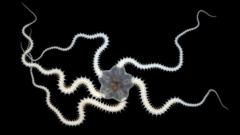Cracking the Code of Bitter Taste Receptors
Our sense of taste plays an important role in keeping us healthy. The ability to detect bitter flavors serves as a built-in defense mechanism, warning us away from potentially toxic substances. Now, new research is providing unprecedented insights into how one of the body’s primary bitter taste receptors functions at the molecular level.
Taste receptors belonging to the TAS2R family help us perceive bitterness. Of the 26 known human bitter taste receptors, TAS2R14 is particularly active in many extraoral tissues beyond just the tongue. This suggests it plays a role beyond just taste, likely acting as a sentinel to detect harmful compounds throughout the body. However, the precise mechanisms by which TAS2R14 recognizes and responds to such a diverse array of bitter ligands had remained elusive.
An international team of scientists has now cracked the code, revealing atomic-level details of how TAS2R14 operates. Using cryo-electron microscopy, the researchers determined ultra-high resolution structures of TAS2R14 coupled to two key signaling proteins, Ggust and Gi1. These structures provided surprising insights into TAS2R14’s ligand sensing abilities.
First, the researchers found cholesterol occupying TAS2R14’s presumed binding pocket for bitter ligands. Molecular modeling showed cholesterol makes intimate interactions with key receptor residues, acting as an endogenous agonist that trigger’s TAS2R14’s basal signaling activity. This role for cholesterol had not been anticipated.
Perhaps even more remarkably, the structures revealed a second binding site located intracellularly. This allosteric site was occupied by a synthetic bitter compound known as cmpd28.1. Not only did cmpd28.1 directly contact residues within TAS2R14, it also formed interactions with the signaling proteins – meaning it enhances receptor activation while also stabilizing the protein complex.
Follow-up experiments confirmed cholesterol’s ability to promote TAS2R14’s function, while cmpd28.1 acted as both an agonist and allosteric modulator or “ago-PAM.” Mutations disrupting either site crippled the receptor’s activation. Molecular dynamics simulations further supported the structures’ validity, showing cholesterol firmly lodged in its pocket across long simulations.
The structures also shed light on how TAS2R14 engages its signaling partners. Key ionic interactions between the receptor and G-proteins were identified that likely facilitate coupling. And an elongated cavity connecting the two ligand pockets hints at how TAS2R14 may accommodate such diverse compounds.
This work not only provides the first high-resolution glimpses of any bitter taste receptor, but reveals new possibilities for drug targeting. Mimicking cmpd28.1’s dual action could yield therapies precisely tuning TAS2R14 signaling. Given the receptor’s role beyond just taste, such drugs may prove useful for conditions like asthma or gastrointestinal disorders. Overall, these findings have cracked open new doors toward understanding our sense of bitterness – and how it safeguards health from within and without.
Reference(s)
- https://doi.org/10.1038/s41586-024-07253-y
Click TAGS to see related articles :
DRUG TARGET | PHYSIOLOGY | TASTE
- Deep-sea mining tests impact over a third of...on December, 2025 at 8:00 am
- Deep-sea mining tests impact over a third of...on December, 2025 at 8:00 am
- Top UK scientist says research visa restrictions...on December, 2025 at 1:20 am
- BBC Inside Scienceon December, 2025 at 5:00 pm







